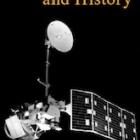Tilley, David Rogers. “National Metabolism and Communications Technology Development in the United States, 1790–2000.” Environment and History 12, no. 2 (May, 2006): 165–90. doi:10.3197/096734006776680227. The accelerating rate of technology development during the past two centuries was coupled to a hastened pace of national metabolism, which included vast consumption of fossil fuels, mineral deposits, virgin timber, rich soils and other natural resources, and the construction of an international medium for the communication and storage of ideas and discoveries. The development, maintenance, and improvement of technology, defined anthropologically as physical devices and mental knowledge of how to employ such devices, requires energy. New technologies provide powerful and flexible means for organising subsequent system structure and function, and nourish opportunity for more discovery and technical innovation. From a systems ecology perspective, technology development is an evolutionary process, which implies that it is a self-organising, autocatalytic process driven by energy and resource availability, population size, economic development, scientific knowledge and previous innovation. Understanding how the dynamics of technology development were related to historical resource use (i.e., national metabolism) is important in a world operating mostly on finite resources because it can offer some perspective on the effects of future resource limitations on technology development. Emergy (with an ‘m’) evaluation, a physically based environmental accounting system that tracks the total amount of resources required to produce something by tracing all resource flows back to the Earth’s ultimate energy source of solar radiation, was employed to measure national metabolism of the United States during the past two centuries and to estimate the national metabolism required to develop and maintain the broad-use of four communication technologies. National metabolism of the US grew exponentially from 1790 to 2000, increasing 1600 per cent during those 210 years. The national metabolism required to develop and maintain use of satellites, radios, televisions and telephones approached a minimum, indicating that limits to efficiency improvements exist and that the ubiquity of large-scale technologies surviving under future resource limitations is doubtful. All rights reserved. © 2006 The White Horse Press
"National Metabolism and Communications Technology Development in the United States, 1790–2000"
Tilley, David Rogers | from Multimedia Library Collection:
Environment and History (journal)


